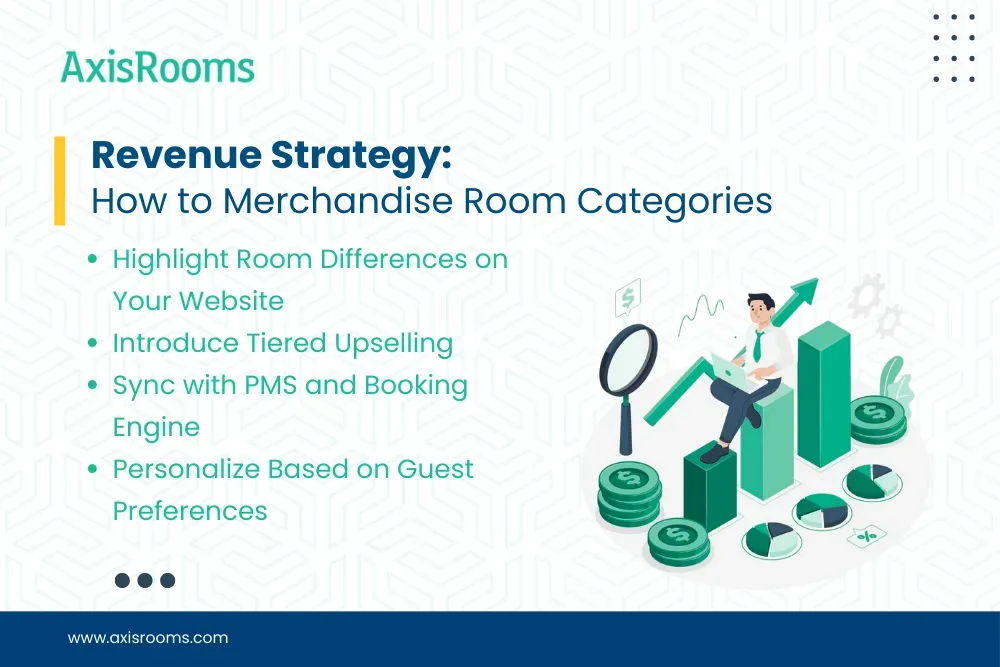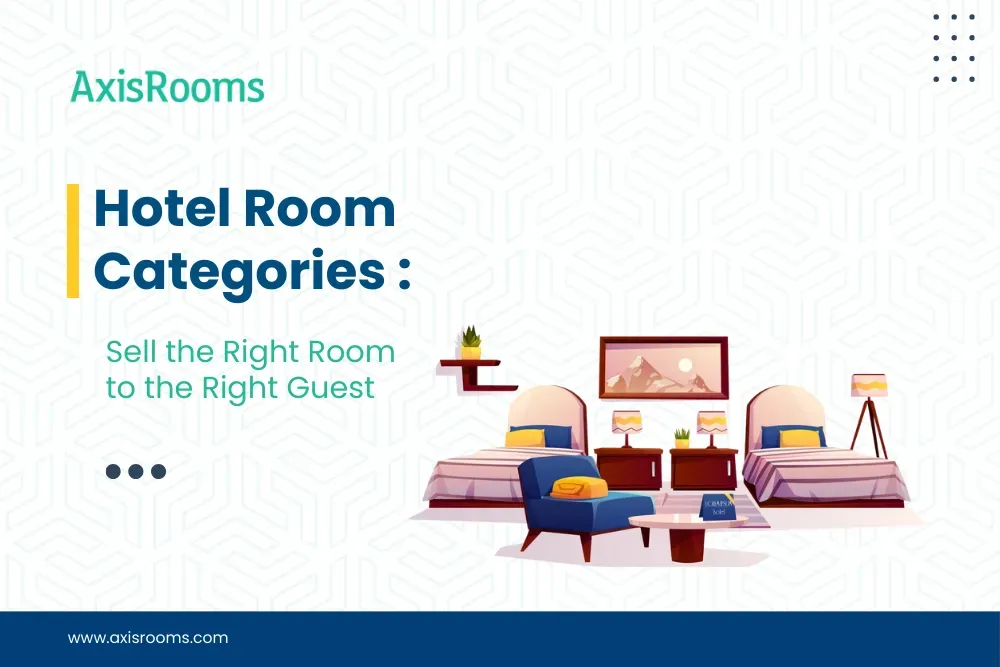Not all rooms are created equal—nor valued equally by guests. In today’s experience-driven travel market, hoteliers must go beyond just selling rooms. They must understand which room types guests are willing to pay more for and how to position them as irresistible choices.
This blog breaks down the different types of rooms, what guests expect from them, and how smart merchandising can turn bedrooms into high-performing revenue assets.
1. Why Room Categories Matter More Than Ever
Guests no longer just book a “room”—they book an experience. Whether it’s for aesthetics, added comfort, or practical benefits, travelers are willing to spend more when value is clear.
Key Insight: Hotels that personalize and differentiate room offerings see up to 20% higher revenue per guest
2. The Most Popular Types of Hotel Rooms (And What Today’s Guests Expect)
3. Room Descriptions That Convert
A room’s name and description are your first pitch. Avoid generic titles. Instead of “Standard Room,” try:
“A cozy retreat designed for the solo explorer, equipped with all essentials for a restful stay.”
Tip: Use benefit-driven, sensory language. Focus on guest outcomes like “better sleep,” “quiet mornings,” or “city skyline views.”
4. What Guests Are Willing to Pay More For
According to 2024 Expedia and HotelTechReport data, travelers are more likely to upgrade rooms for specific features. Below is a snapshot of what they’re willing to spend more for:
5. Revenue Strategy: How to Merchandise Room Categories

Highlight Room Differences on Your Website
Don’t just list rooms by price. Use comparison cards that show value differences clearly—square footage, bed type, view, and perks.
Introduce Tiered Upselling
Offer upgrades:
- During direct booking (“Add a balcony for $15 extra”)
- In pre-arrival emails or SMS
- At check-in via staff or kiosk
Sync with PMS and Booking Engine
Ensure your room types, descriptions, and availability are consistent across:
- Website
- OTAs
- Front desk systems
Personalize Based on Guest Preferences
Use past guest data and booking behavior to offer room types that match preferences—like larger rooms for returning families or corner suites for frequent business travelers.
How AxisRooms Helps You Sell the Right Room, at the Right Time
With AxisRooms’ Channel Manager, you can distribute multiple room types (like suites, deluxe, or themed rooms) across OTAs with real-time inventory sync. Combined with its Revenue Management System, hotels can dynamically price rooms based on demand, seasonality, and room category performance—maximizing both occupancy and average daily rate.
By leveraging AxisRooms’ intelligent distribution and pricing tools, hoteliers ensure that their most valuable rooms are always visible, competitively priced, and booked by the right guests.
6. Final Thoughts: Bedrooms as Revenue Engines
Your rooms aren’t just inventory—they’re your most powerful revenue levers. By understanding what guests value, tailoring offerings, and selling those room types more effectively, you unlock new revenue streams from the same real estate.
Every square foot can drive profit—when merchandised right.
FAQs for Hotel Room Categories
Q1: How many types of hotel rooms are commonly offered?
A: Most hotels offer between 5–8 core room types such as Standard, Deluxe, Suite, Double, Executive, and themed rooms—each serving a specific segment.
Q2: What is the best room to upsell?
A: Suites and rooms with views (balcony/sea-facing) tend to perform best for upselling due to their perceived value.
Q3: Does renaming rooms improve bookings?
A: Yes. Rooms with lifestyle-driven or themed names convert better than generic labels. Think “Zen Suite” vs. “Room 402.”
Q4: How do I write better room descriptions?
A: Focus on the guest benefit—what they will feel, experience, or enjoy. Use action verbs and emotional triggers.
Q5: How can hoteliers identify what guests are willing to pay more for?
A: Use PMS data, review analytics, OTA feedback, and upsell acceptance rates. Post-stay surveys can also help refine insights.


